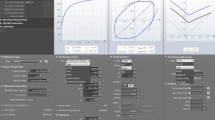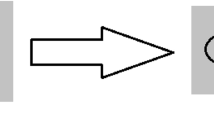Abstract
In this study a simulation-based sensitivity study is performed in order to investigate the influence of the forming history on the properties of an assembly. In the study the assembly properties are predicted by sequentially simulating the manufacturing process chain of a sheet metal assembly. Several simulations of the assembly stage are performed in which different combinations of forming histories are transferred from the forming stage. It is found that the forming history affects the properties of the assembly and that the residual stress state is the most influential history variable. This demonstrates the importance of utilising the complete final mechanical state of each manufacturing step as the initial condition for the subsequent step in the manufacturing process chain in order to achieve accurate predictions of the assembly properties. Furthermore, if more reliable predictions can be made concerning the manufacturability of a product and its in-service behaviour, more design alternatives can be evaluated during product development while a considerably smaller number of physical prototypes are needed.











Similar content being viewed by others
References
Liu SC, Hu SJ (1997) Variation simulation for deformable sheet metal assemblies using finite element methods. ASME J Manuf Sci Eng 119:368–373
Cai W, Hsieh C, Long Y, Marin S, Oh K (2006) Digital panel assembly methodologies and applications for compliant sheet components. ASME J Manuf Sci Eng 128:270–279
Fan X, Masters I, Roy R, Williams D (2007) Simulation of distortion induced in assemblies by spot welding. Proc IMechE Part B: J Eng Manuf 221:1317–1327
Papadakis L (2008) Simulation of the structural effects of welded frame assemblies in manufacturing process chains. Dissertation, Technische Universität München
Zhang L, Zhu X, Xu S, Wang CT (2009) Advanced simulation technology using LS-DYNA for automotive body manufacturing process: from stamping to assembly. SAE World Congress & Exhibition, Detroit
Leck L, Ramke M, Awiszus B, Pinner S, Knick J (2010) End-to-end virtualization of the development and production of vehicles. In: 1st conference on multiphysics simulation, Bonn
Gentilini I, Shimada K (2011) Predicting and evaluating the post-assembly shape of thin-walled components via 3D laser digitization and FEA simulation of the assembly process. Comput Aided Des 43:316–328
Zaeh M, Papadakis L, Langhorst M (2008) Simulation of the manufacturing process chain of welded frame structures. Prod Eng 2:385–393
Kose K, Rietman B (2003) Plasticity effects in subsequent simulations of car structures. In: VII international conference on computational plasticity, Barcelona
Myllykoski P (2006) Using forming simulations to improve mechanical simulation accuracy. J Mat Proc Tech 177:422–425
Huh H, Kim KP, Kim SH, Song JH, Kim HS, Hong SK (2003) Crashworthiness assessment of front side members in an auto-body considering the fabrication histories. Int J Mec Sci 45:1645–1660
Gümrük R, Karadeniz S (2009) The influences of the residual forming data on the quasi-static axial crash response of a top-hat section. Int J Mec Sci 51:350–362
Clees T, Steffes-lai D, Helbig M, Sun DZ (2010) Statistical analysis and robust optimization of forming processes and forming-to-crash process chains. Int J Mater Form 3:45–48
Govik A, Nilsson L, Moshfegh R (2012) Finite element simulation of the manufacturing process chain of a sheet metal assembly. J Mat Proc Tech 212:1453–1462
Andersson A (2007) Numerical and experimental evaluation of springback in advanced high strength steel. J Mat Eng Perform 16:301–307
Chang M, Gossard DC (1997) Modeling the assembly of compliant, non-ideal parts. Comput Aided Des 29:701–708
Hallquist J (2009) LS-DYNA theory manual. Livermore Software Technology Corporation, Livermore
Barlat F, Brem JC, Yoon JW, Chung K, Dick RE, Lege DJ, Pourboghrat F, Choi SH, Chu E (2003) Plane stress yield function for aluminum alloy sheets–part 1: theory. Int J Plast 19:1297–1319
Acknowledgments
The material characterisation and stamping of components were conducted by Per Thilderkvist and Jörgen Hertzman at the Industrial Development Center, Olofström, Sweden. The physical assembly and CMM measurements were carried out at Volvo Car Body Components, Olofström, Sweden and the support from Dr. Alf Andersson is gratefully acknowledged. The work presented in this paper has been carried out with financial support from the Swedish Foundation for Strategic Research, the ProViking programme.
Author information
Authors and Affiliations
Corresponding author
Rights and permissions
About this article
Cite this article
Govik, A., Moshfegh, R. & Nilsson, L. The effects of forming history on sheet metal assembly. Int J Mater Form 7, 305–316 (2014). https://doi.org/10.1007/s12289-013-1128-9
Received:
Accepted:
Published:
Issue Date:
DOI: https://doi.org/10.1007/s12289-013-1128-9




